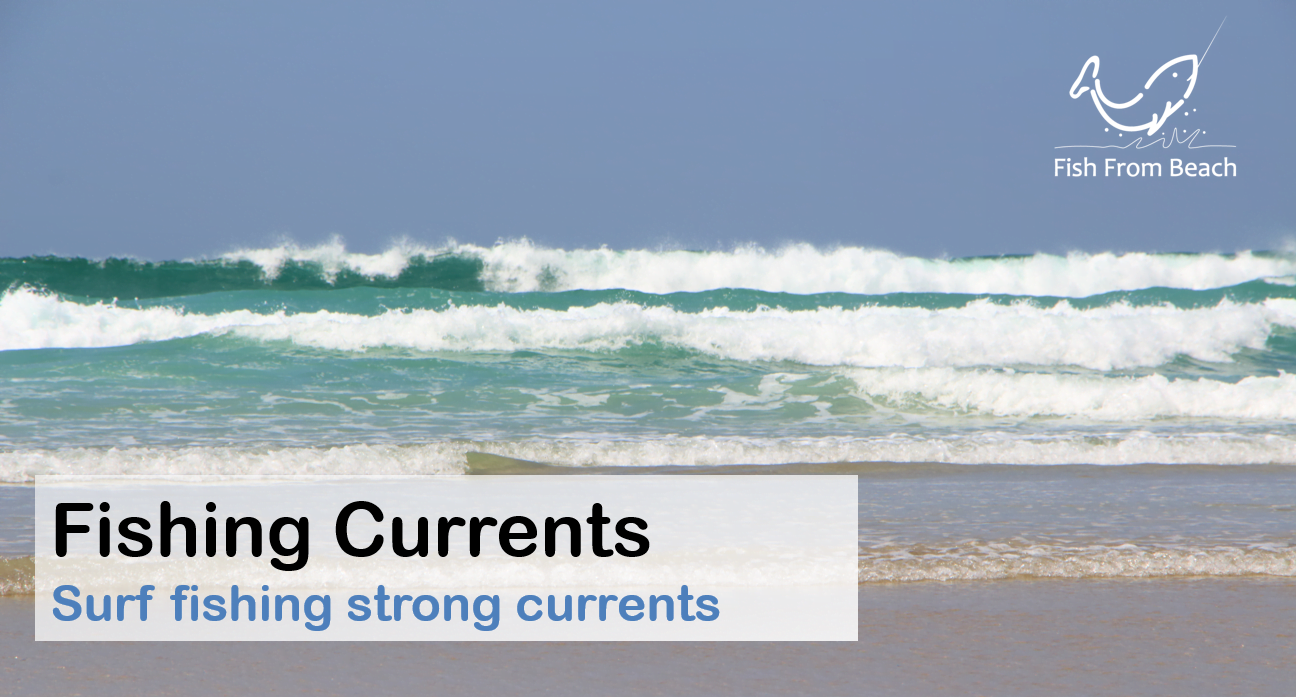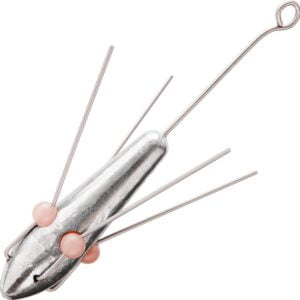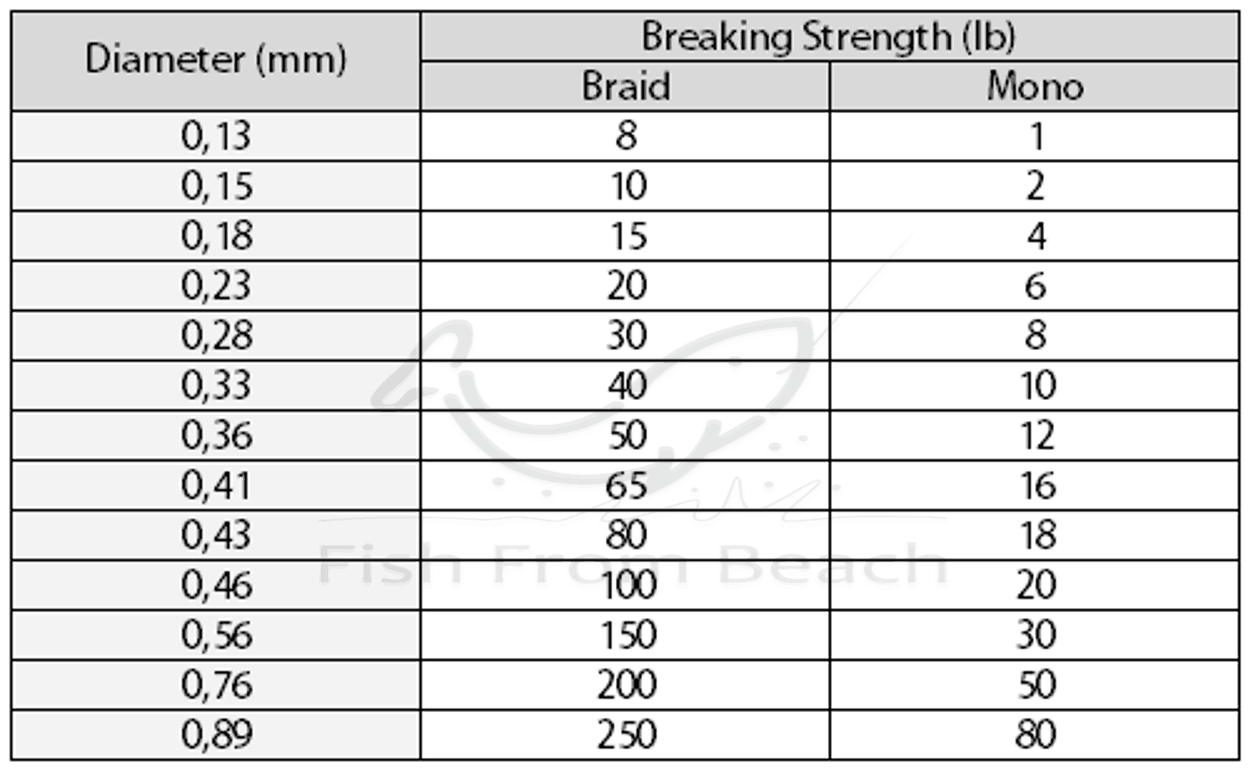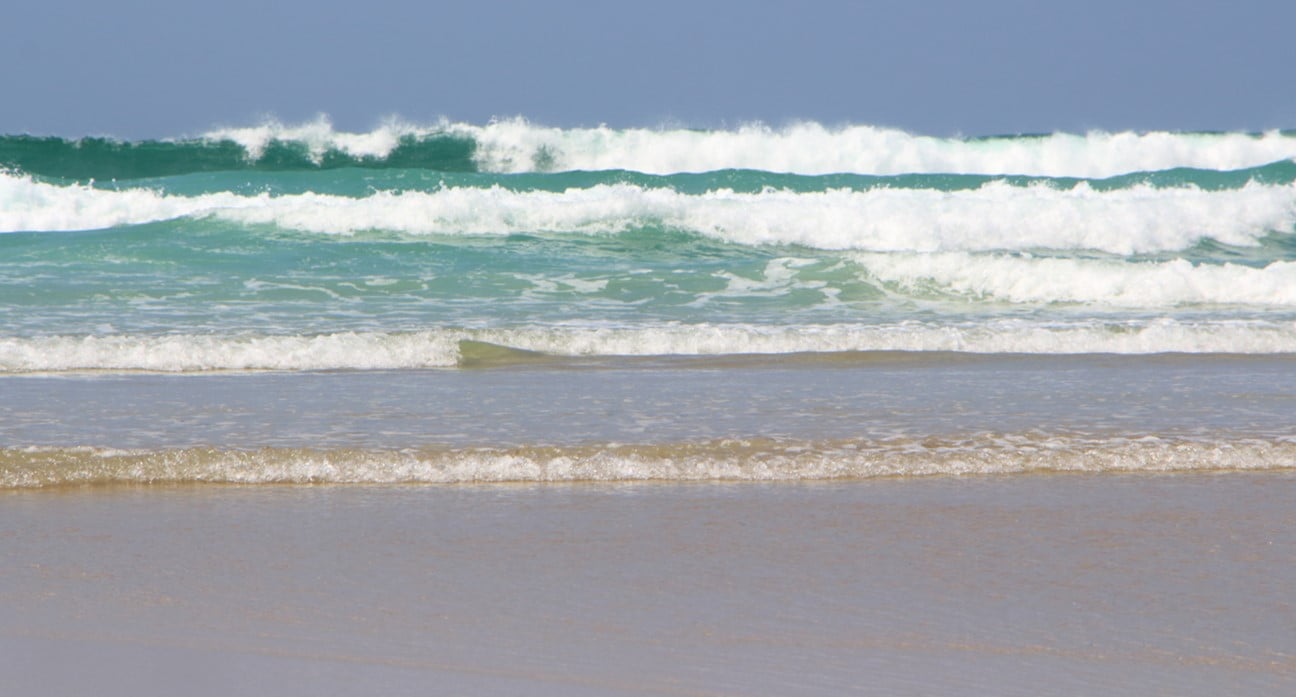
Shore fishing is known to be more productive when there is a current in the surf zone. Moving waters provide more feeding possibilities for fish and make prey fish easier to catch. That being said, very strong currents make surf fishing difficult and keeping the line stable in roughly moving waters is a challenging task.
Therefore, surf fishing strong currents need to be done with many things in mind and requires special equipment and different techniques and practices.
In a nutshell, strong currents require the use of a higher casting weight in order to keep baited rigs where they should be. Minimalistic setups with a thin braid line and more active fishing help also to remain stable in heavily moving surfs.
In this article, we will first learn why the water current is a good factor for surf fishing, and then we will dive deeper into the different things that you need to be aware of when fishing heavy currents from shore, as well as the optimal tackle for strong current fishing.
Why the current is good for surf fishing ?
Ask any experienced fisherman about the best surf fishing conditions and he will pick the one with current and running water.
Yes, a moving surf means more active fish, more bites, and as a result, more catches.
This is a rule and you should remember it and take advantage of it.
First of all, the current stirs up more nutritional elements on the nearshore seabed increasing the feeding activity of fish.
Buried sand fleas, crustaceans, and the other food particles get all exposed when the water is moving, as a result, more fish approach the shore during the current because they know there are some feeding opportunities out there.
The second reason why the current is beneficial for surf fishing is that it makes it easier for predatory fish to catch preyfish.
Did you ever wonder why fish concentrate on the edges of sandbars where the waves break or around the cut-off areas such as the points and holes ?
The simple reason for that is because these are spots where the water movement suddenly changes the pace creating chaos that disorientates baitfish and makes them easier to catch. So strategically, predators hold around these areas waiting for food to come their way.
Where I want to get here, is that the water current creates a similar effect and generates turbulence that prey fish find difficult to navigate, which makes them easier to catch by larger fish.
In addition, this turbulence provides predatory fish with the necessary cover to trick and surprise unwary prey.
Another reason why currents bring more bites for surf anglers is that they are often associated with wind and high swell. This exposes the water surface to more oxygen and encourages more fish to approach shallow waters in search of an abundance of dissolved oxygen.
What is the problem with too strong currents ?
With all that has been said, we must also mention that extremely strong currents are counterproductive for surf fishing. Why ? For the simple reason that they make it hard for fishermen to keep their bait in the strike zone.
Fish only hold where they can safely hide from larger predators and where they have access to food without consuming too much energy. Consequently, they are more likely to concentrate in specific areas and leave the rest of the surf deserted.
Your role as a surf angler is then to locate these areas, cast in their direction and stay there until a fish takes the bait.
However, when the surf is roughly moving, you should expect to have a difficult time keeping your baited rig where you want it to be, as strong currents have the ability to move heavy objects over the seabed.
In addition, running waters exert higher pressure on your line pulling the entire setup out of the strike zone.
Another reason why strong currents are counterproductive for surf fishing is that they transform bite detection into a challenging task, especially when the current is associated with wind and a high swell.
In such conditions, your rod tip will start shaking and bouncing giving no clue whether it’s a fish tugging on the bait or just the current effect.
So because of all that, surf fishing strong currents need to be done with special equipment and techniques that allow your bait to stay stable where fish are most likely to bite.
Tips for surf fishing strong currents
Increase the casting weight
The first thing that you should consider when the current keep pushing your bait is to increase your casting weight.
The fishing weight is the main factor that dictates your stability in the surf zone. Adding a few ounces may be all that you need in order to keep your bait where interesting things happen.
As a rule of thumb, 4 oz sinkers will do great in most surf conditions, but when things are too unstable, this may not be enough.
Personally, I always start my surf fishing trips with a 3-4 oz sinker, but I also make sure to have leads of different weights in my tackle box so I can upsize my casting weight whenever the surf requires it.
Read this article for more information about the optimal weight for shore fishing.
Use a pyramid or breakaway sinker
Besides the weight, the shape of your sinker is also an important factor to consider.
Compared to egg and ball shaped sinkers, pyramid sinkers proved to have a better resistance against the current thanks to their edgy shape that holds more effectively on the bottom.
That being said, pyramid sinkers may not be the optimal solution when fishing rocky grounds as they can easily get snagged between the rock clusters.
That’s where the breakaway sinkers come into play. Their aerodynamic shape with 4 wire spikes provides a firm grip on the bottom while staying easy to get out of snags, thanks to the wires that snap open when the fisherman retrieves the line.

Use a thinner line
The use of a low diameter line reduces the pressure of the current on your terminal tackle helping your bait to remain steady where you want it to be.
A thin line will also receive less pressure from the wind which, as said earlier, has a similar impact on your stability.
Therefore, I would never go over 0.30 mm in line diameter when fishing strong currents. Anything thicker can highly impact your stability.
As you can see in the table below, braid is the only way to go here as it provides low line diameters while keeping the breaking strength high.

Mono and fluoro are poor choices for strong currents because you will be forced to sacrifice the line strength in order to have a thin line that withstands the current.
Braid is also highly sensitive and does not stretch, which makes it very effective at detecting bites and transmitting vibrations along the line. Features that are extremely valuable in an agitated surf zone.
That said, keep in mind that connecting a mono or fluoro leader to your braided line is generally a great idea, especially when fishing abrasive structures or when targeting sharp-toothed fish.
Mono and fluoro are good abrasion resistants and that makes them a safety cushion in those conditions. However, for rough surfs, make sure to keep your leaders shorter than 12 inches to minimize contact with the current.
Keep your rig simple
The simplest rigs are always the best. This is a general rule on which most surf anglers agree, but it gets more critical when fishing heavy currents.
Rigs with many objects attached and many snoods popping out receive more pressure from the current and are easier to get pulled out of strike zones.
So for strong currents, try to limit your line setup to only 3 simple elements:
- A sinker
- A leader
- And a hook
Of course, you can use small beads and swivels for more efficiency, but try to not go beyond that.
Personally, the fish finder rig is my favorite line setup and has always been effective for me in strong currents. The Carolina rig is also a good option and gives similar results.
Use fast action rods
When exposed to pressure, slow action rods bend starting from their lower 1/4. This makes them less sensitive and terrible at bite detection. They are, therefore, a poor choice when surf fishing strong currents as the rod’s tip will keep bouncing with the water movement, giving no clear signal whether it’s a good time to set the hook or not.
When fishing agitated surfs, you need a rod with some backbone in order to receive enough feedback from the other end of the line.
Keep the rod in your hands
A strong current requires more active fishing. In other words, when the surf is unstable, you can’t just cast the line, take a seat, and wait for a bite to happen. That’s not a smart thing to do.
Instead, you need to keep the rod in your hands and stay all the time connected to the other end of your line. This allows you to have a better understanding of what happens to your terminal tackle once it enters the water, and detect any deviation or sign that your offering is no longer where it should be, and it’s time to reel in and do a new cast.
Also, remember that a strong current makes it hard to detect small bites, and you will only feel the subtle vibrations of a biting fish when you touch the rod or when you put the line between your fingers.
Take the slack out of your line
Active fishing is not just about keeping the rod on your hands but also about maintaining the optimal line tension.
In other words, you need to keep watching the line as you wait for a bite and whenever you notice an arc shape forming, reel in and take the slack out.
The main objective behind all this is to minimize the contact of your line with water so it does not exert much pressure on it dragging the whole setup away of where it is intended to be.
This is a good practice no matter the surf conditions where you fish, but it gets more critical during strong currents as they have a big impact on the line.
A slack line is also bad for bite detection as vibrations take a longer time to reach your hands.
Use a smelly bait
Strong currents create turbulence in the surf zone. And while that’s beneficial for keeping your line and hook invisible, it also makes your bait hard to see.
Many fish species rely on their sight to feed, as a result, you should expect a reduced bites count in a murky surf zone as fish won’t be able to spot your offering easily.
The only solution to compensate for this is to use a smelly bait presentation.
Cut bait is the number one option here because it releases blood and oil when dropped into the water, and that attracts hungry fish and helps them locate the food without the need to clearly see it.
Use 2-3 inches chunks of whichever bait available in your bait store. Mullet, mackerel, menhaden, herring, and sardines are all good options.
If you prefer artificial lures, Berkley Gulp baits are the way to go in heavy currents. These water-based lures imitate the odor of cut and live bait and draw the attention of fish without crossing their vision.
Summary
Moving waters are a great opportunity to throw bait in the surf and catch some fish.
Currents create more feeding opportunities in the surf zone and encourage fish to leave the shelter and look for a meal.
However, strong currents make surf fishing more complicated and require upgrading the tackle to another level in order to keep baits where they should be.
Generally speaking, sinkers over 4 ounces with a braided line of less than 0.30 mm in diameter will hold firm in the strongest surf conditions.
Also, simple rigs with minimal things attached are the optimal setups for strong currents because they reduce the pressure that the current exerts on your terminal tackle.
All that being said, keep in mind that very strong currents with swells exceeding 9-10 feet are not safe for shore fishing. In such conditions, it is better to report fishing for another day as it can be so dangerous to be on the beach during those times. In addition, there may not be a lot to fish for in a highly strong current as most species find it difficult to navigate heavily moving surfs and thus prefer to escape offshore in search of calmer waters.
Some recommended surf fishing gear(*)
Note (*): If you make a purchase through links from this website, we may get a small share of the sale from Amazon or other similar affiliate programs.
Surf Fishing Survey
Help us provide you with better content by answering simple questions about your surf fishing experience and knowledge.
We will put the collected responses together and turn them into valuable information that will help you catch more fish from shore 😉
Note: No personal information will be collected with your answer.


